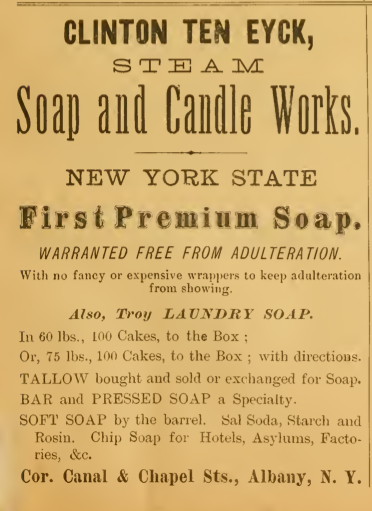
As we’ve mentioned before, once steam became a practical means of operating machinery, it was also the byword for everything modern and efficient (as electricity would be some decades later). We’ve written of steam typography, steam crackers, and now a steam soap and candle works.
Clinton Ten Eyck was one of Albany’s venerable Ten Eyck family, who were among the first settlers. His grandfather was a judge and State Senator who was a member of the convention that ratified the United States Constitution in 1787. His father was County Sheriff. Clinton, it seems, caught the mercantile bug and went into the soap and candle business at the corner of Chapel and Canal streets (Canal is now Sheridan Avenue). When this ad ran in 1886, making such products involved rendering animal fat, and his location on the edge of Sheridan Hollow makes sense — close to the downtown trade, but also close to the West Albany railyard, which at that time was still one of the largest stockyards in the country. Nearby were many meat processors (such as the legendary and long-empty Tobin’s First Prize factory), all of which would have made a ready source of raw materials for his modern steam soap manufacture.
No fancy or expensive wrappers to keep adulteration from showing! Adulterating soap with sand and clay was common at the time, to add weight without adding any cleaning value, at very little cost.
